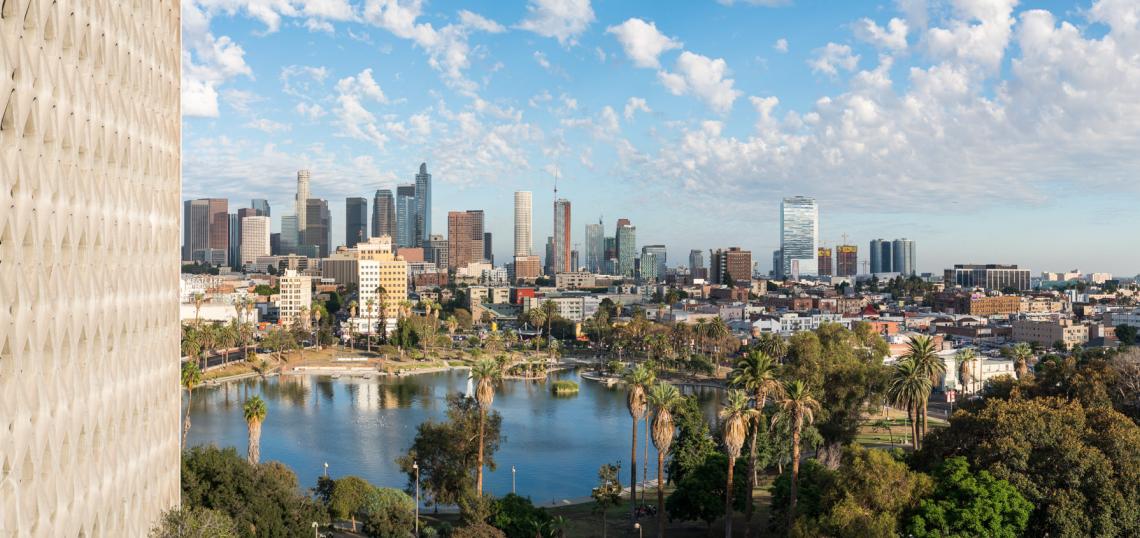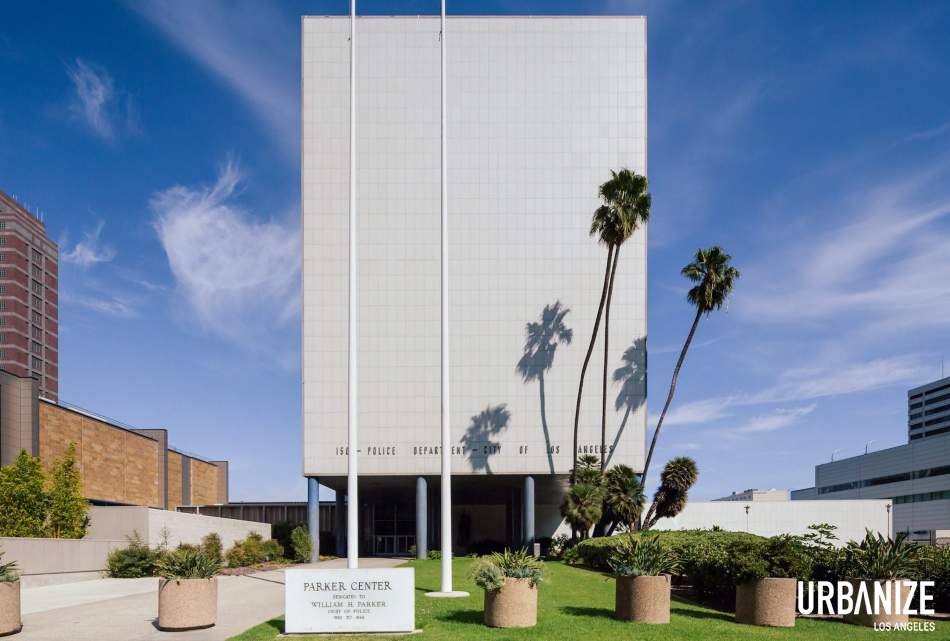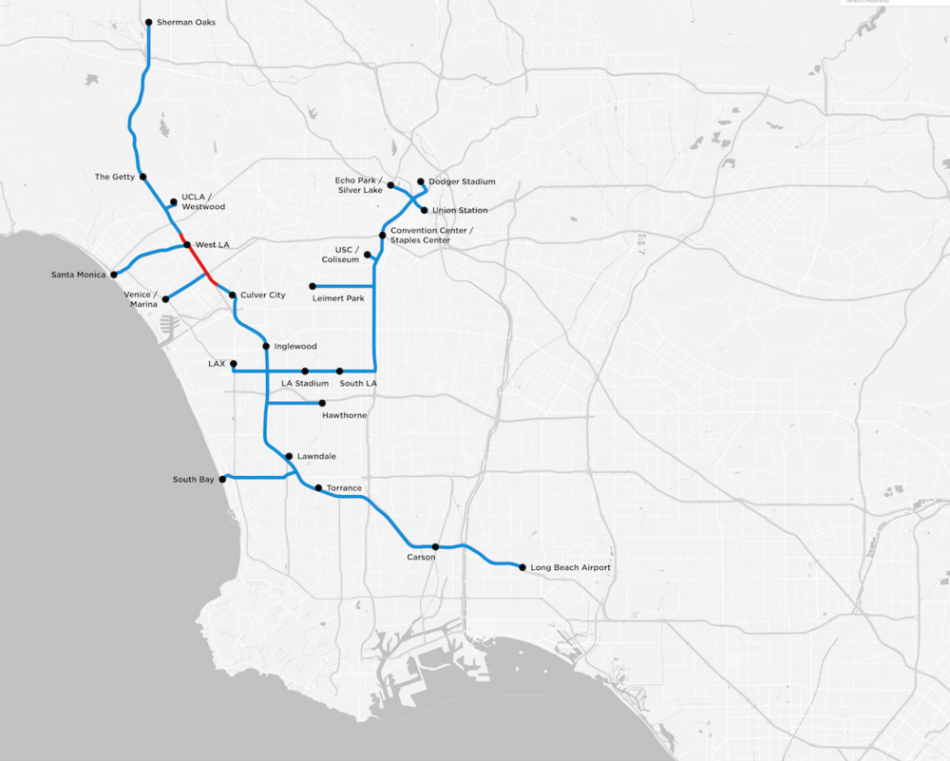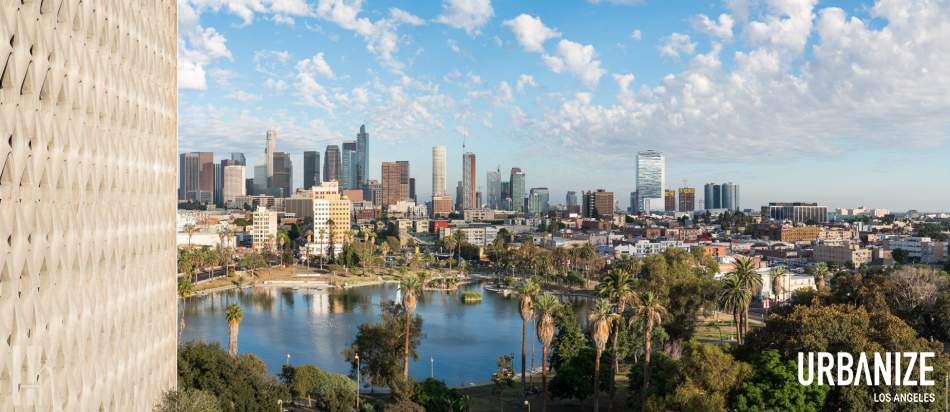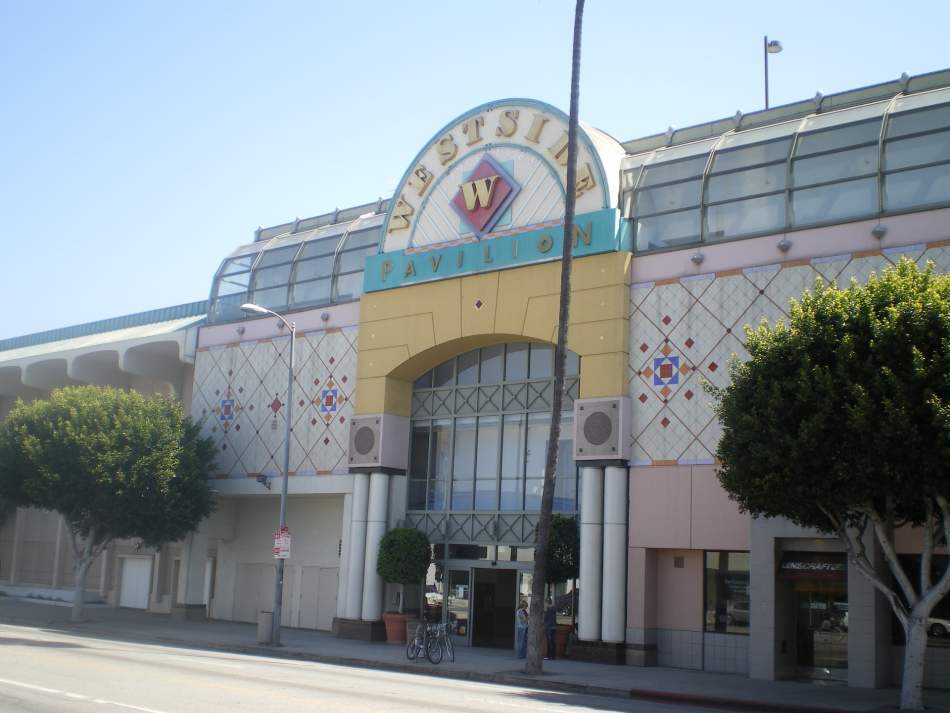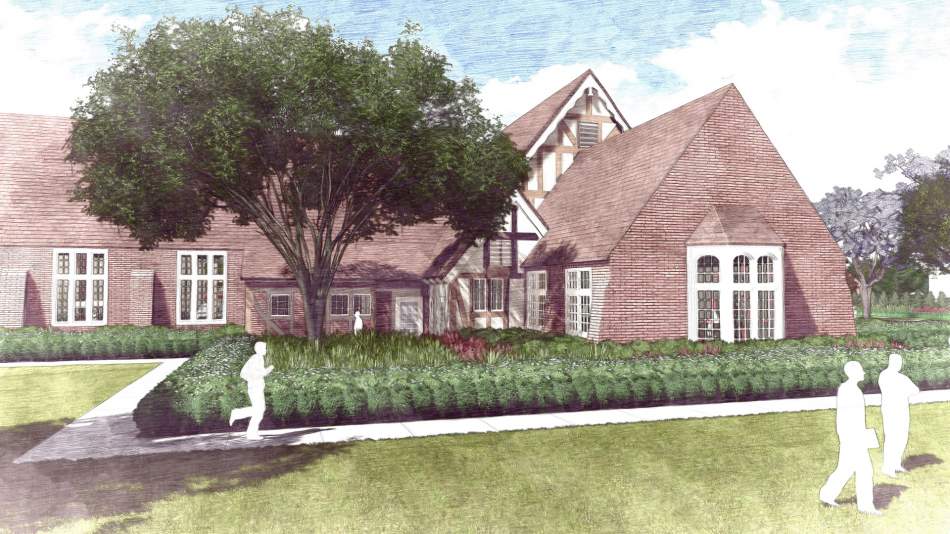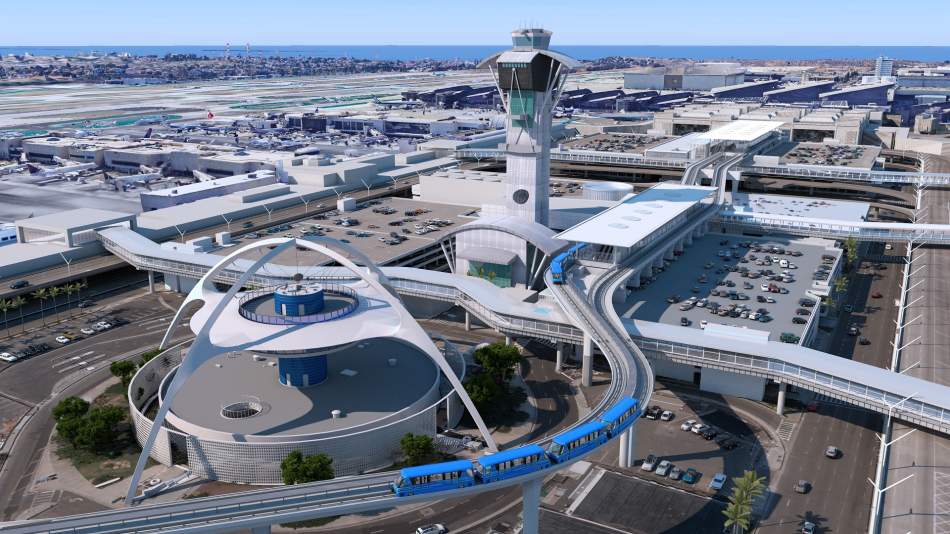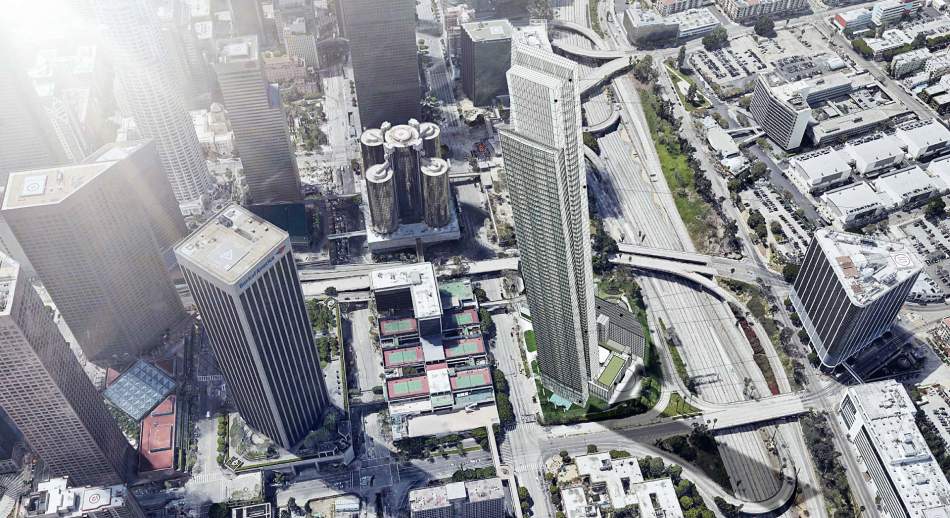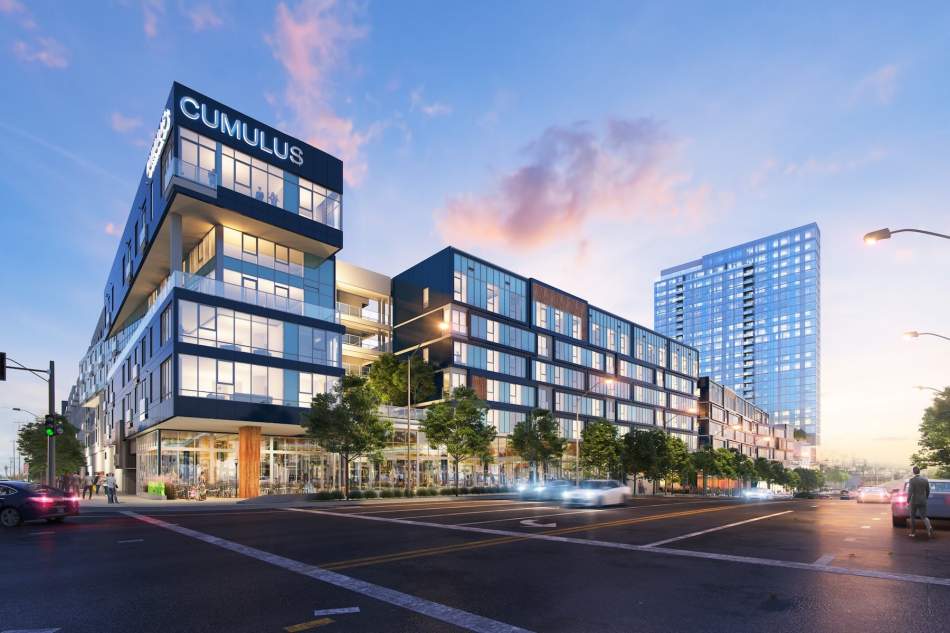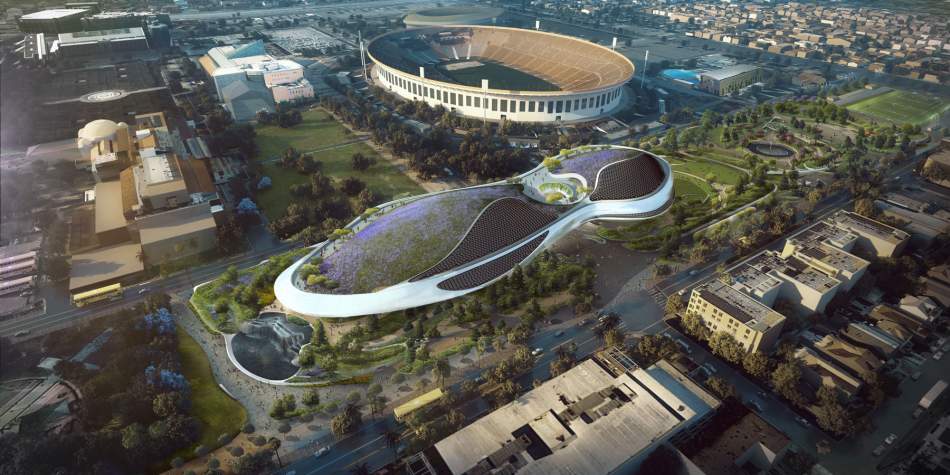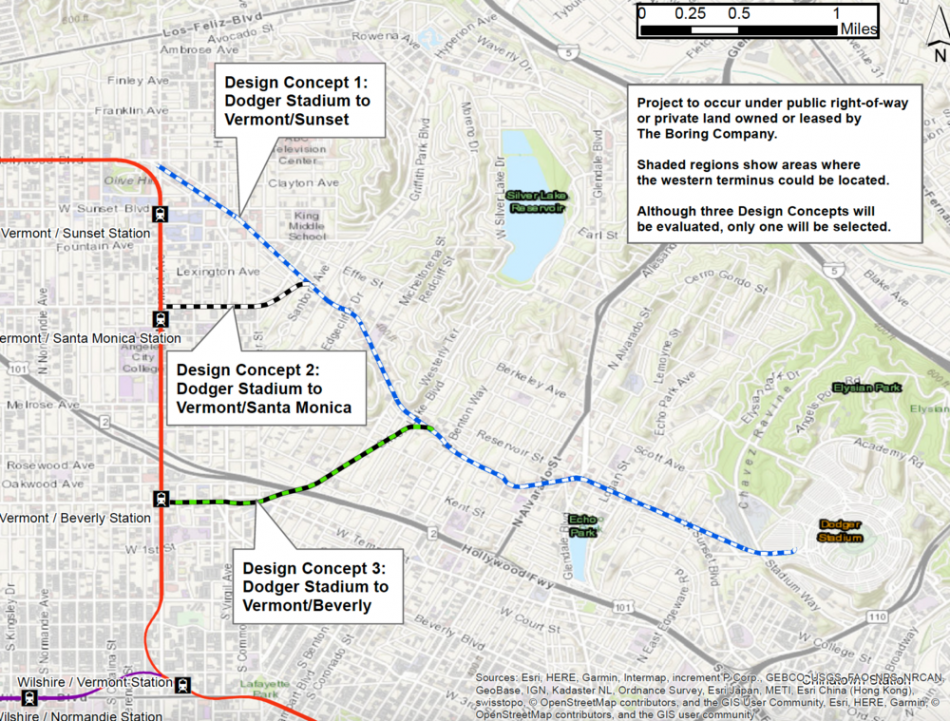In August, it was announced that demolition was imminent for Parker Center, the ex-headquarters of the Los Angeles Police Department. Crews are now in the process of tearing down the eight-story structure at 150 N. Los Angeles Street, an event that marks the culmination of a contentious battle which pitted preservationists against civil rights advocates and the Little Tokyo community.
Designed by the renowned Los Angeles architect Welton Becket, Parker Center served as the LAPD's headquarters from the mid-1950s until 2009, when it was mostly vacated in favor of the new Police Administration Building across the street. Questions immediately arose as to the building's future.
In 2014, the City of Los Angeles announced plans to replace the ex-police headquarters with a new civic office tower, part of a longstanding effort to consolidate more of the city's workforce within the Civic Center. Plans call for a building as tall as 29 stories which would feature up to 750,000 square feet of office space with ground-floor retail.
Preservationist, including members of the Los Angeles Cultural Heritage Commission, sought to save Parker Center from the wrecking ball, noting that the building was designed by the prominent local architect Welton Becket.
Civil rights advocates balked the notion of honoring the legacy of the building's namesake - former LAPD Chief William Parker - who was responsible for instituting discriminatory policies in minority communities. Likewise, Little Tokyo stakeholders have long opposed the preservation of Parker Center, as the building occupies land that was taken from Japanese-American property owners via eminent domain.
The Los Angeles City Council ultimately voted against designating Parker Center a HIstoric-Cultural monument, clearing the way for the building to be demolished, and for the new office tower to rise in its place.
Elon Musk Tries to Tunnel Under the Westside
Elon Musk made waves in April when Los Angeles city officials signed off on his plan to build a "proof of concept" tunnel for his latest business - The Boring Company. Amongst several endeavors, the Hawthorne-based firm has announced plans to construct a network of tunnels in the Los Angeles area which could shuttle cars and other vehicles at speeds of up to 150 miles per hour.
The proposed 2.7-mile tunnel, which would have run between Pico and Washington Boulevards via Sepulveda Boulevard, was expected to be built over a roughly nine-month period. That never panned out, with Musk officially abandoning the proof of concept tunnel in November.
However, Musk has stated that he remains committed to another Los Angeles-area Boring Company project - a proposed tunnel system which would connect Dodger Stadium with Metro's Red Line.
25 Solutions From A Builder’s Perspective To Fix The California Housing Crisis
In January, Los Angeles-based developer @housingforca kicked off 2018 by offering his take on how to fix California's housing crunch. It's not a short read, but it's a well-informed piece which goes beyond calls for updating zoning regulations and cutting bureaucratic red tape.
The Westside Pavilion is Going Office
After years of hemorrhaging tenants, the Westside Pavilion is calling it quits as a shopping mall.
In March, the Westside Pavilion's owner Macerich teamed with Hudson Pacific Properties on a joint venture that will transform the bulk of the shopping center into 500,000 square feet of office space while retaining approximately 100,000 square feet of retail.
The project, which would cost up to $475 million, is set to be completed in mid-2021.
75-Acre Mixed-Use Development Breaks Ground in Whittier
Brookfield Residential and Lennar broke ground in April on The Groves at Whittier, a 75-acre development that will transform the erstwhile Whittier State School and Correctional Facility into a mixed-use property.
The project at 11850 Whittier Boulevard will consist of 561 for-sale homes, 189 apartments, and 150,000 square feet of retail and restaurant space, interspersed with new parks and open space.
Completion is anticipated in Spring 2020.
The LAX People Mover Takes a Big Step Forward
The most visible aspect of LAX's $5.5-billion landside access modernization program began making visible progress this year, with site preparation now underway for the airport's automated people mover.
The 2.25-mile system will operate on an elevated guideway with six stops. There will be nine total trains, operating in four-car sets with capacity for 200 passengers. The trains will operate every two minutes, with an end-to-end travel time of ten minutes.
Construction of the elevated guideway is expected to start early next year, with the system scheduled to begin operations in early 2023. The APM will connect with a new station that is being built to serve Metro's Green and Crenshaw/LAX Lines, finally creating the long-awaited connection with the Metro Rail system.
A New Contender for the Title of L.A.'s Tallest Building
In June, Chinese developer Shenzhen New World Group filed plans with the City of Los Angeles to construct a 77-story tower next to the L.A. Grand Hotel at 333 S. Figueroa Street. The proposed development, designed by Dimarzio | Kato architecture, would rise 1,108 feet in height - eclipsing both the Wilshire Grand and the U.S. Bank Tower.
If realized, Shenzhen New World Group's project would create 599 hotel rooms, 242 condominiums, and 28,705 square feet in the ground-up structure, while also converting the existing 13-story hotel into 224 apartments.
While the proposed tower at 3rd and Figueroa would seem to be the tallest building on the horizon for Los Angeles, it could see some competition on the other side of Bunker Hill, where the $1.2-billion Angels Landing development could result in another tower exceeding 1,000 feet in height.
Radio Broadcast Facility Near Expo Line Makes Way for 1,210 Apartments
Across the street from the Expo Line's La Cienega/Jefferson Station, San Francisco-based developer Carmel Partners is now well into construction on Cumulus, an 11-acre mixed-use complex. The project, which replaces a radio broadcast facility, will result in 1,210 apartments and 100,000 square feet of retail space in two buildings - one of which will rise 30 stories in height.
Cumulus is one of a handful of large developments that are either planned or under construction along the path of the Expo Line, which connects Downtown Santa Monica with Downtown Los Angeles.
On the other side of La Cienega/Jefferson Station, construction recently kicked off for an Eric Owen Moss-designed office tower.
At Culver City Station, office, residential, and hotel developments are now in progress at multiple sites.
Next to Expo/Sepulveda Station, Carmel Partners is in the midst of construction on another mixed-use development featuring nearly 600 apartments.
A block north of Expo/Bundy Station, a landmark Cadillac dealership is slated to be replaced with an office tower and an apartment complex.
A Spaceship Lands in Exposition Park
This year saw the start of construction for the $1-billion Lucas Museum of Narrative Art, which is now rising along Vermont Avenue at the west side of Exposition Park. The four-story structure will contain 300,000 square feet of exhibition space, serving as a permanent home for the 10,000-piece art collection of Star Wars creator George Lucas. The project also includes new park space along the museum's perimeter, and below its elevated structure.
Designed by Chinese architect Ma Yansong, the spaceship-like structure will feature a skin of metal panels, topped landscaped terrace decks.
The project landed in Exposition Park after Lucas was stymied in prior attempts to build his legacy museum in San Francisco and Chicago.
Elon Musk's Solution for Dodger Stadium Traffic is Full of Holes
August 2018 brought the latest bit of outlandish news from mercurial billionaire Elon Musk and The Boring Company: a new set of tunnels to connect Dodger Stadium to Metro's Red Line subway. Alon Levy was less than impressed, writing that "it is extremely unlikely that a tunnel between Dodger Stadium and Vermont would succeed, even if issues around Musk's grandiose overpromises were resolved."




